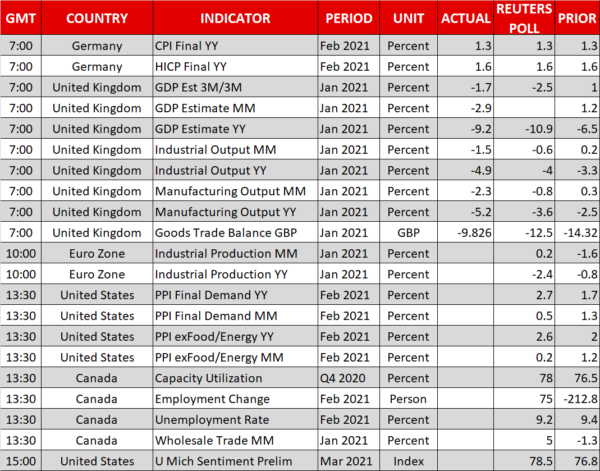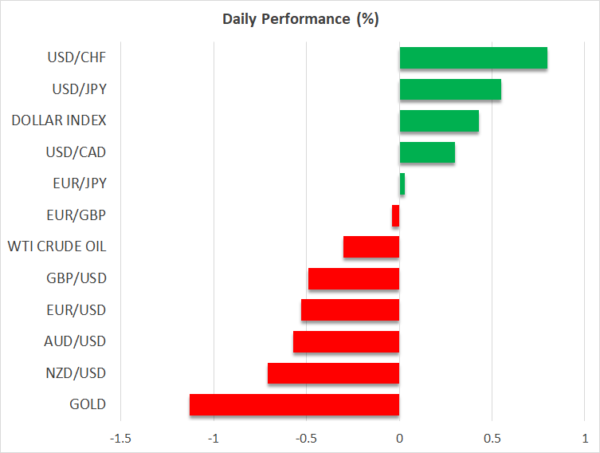- Threat of rising yields keeps animal spirits in check, revives dollar
- ECB promises to speed-up QE, but euro/dollar driven by other factors
- Yen suffers as rate differentials widen, Canadian jobs data coming up
Stocks hit new records but cool down as yields climb
The battle between growing economic optimism and concerns of monetary policy normalization continues to rage in financial markets. Investors are warming up to stocks amid hopes that all the federal spending will lead to an unprecedented boom in the US economy, but that optimism is also pushing bond yields higher as the timeline of Fed rate hikes is brought forward, keeping animal spirits in check.
All the major indices on Wall Street except for the Nasdaq hit a new record high yesterday, without any real catalyst. Perhaps the fact that yields were steady helped to soothe some nerves. Some traders may also be front-running the next round of stimulus checks, a decent chunk of which could end up in the stock market. The defensive dollar fell across the board amid the euphoric mood.
That said, all these moves are reversing on Friday as the boogeyman of rising yields has returned to haunt investors. Futures point to a lower open on Wall Street while the dollar is reclaiming lost ground, with everything marching to the beat of the 10-year Treasury yield that is currently testing its recent highs at 1.6%.
Looking ahead, this restlessness could persist until next week’s Fed meeting. The updated ‘dot plot’ of interest rate projections will be critical. Will the latest round of fiscal stimulus lead more policymakers to pencil in a rate increase for 2023 or will the FOMC push back against market pricing for earlier rate hikes, arguing that the economy is still in bad shape?
ECB promises to accelerate QE, euro yawns
Yesterday, the ECB decided to ‘significantly’ accelerate the pace of its QE purchases over the next quarter to bring European yields back under control, but without expanding the overall size of its QE program.
The signal for markets was twofold. First, the ECB won’t tolerate any spike in yields if the root cause is not an improvement in the European economy. Second, with the Governing Council bringing forward asset purchases, it is now almost certain that the entire envelope of the pandemic QE program will be used, and perhaps expanded down the road.
The funny part is that the euro didn’t care much. Euro/dollar fell a few pips on the mildly dovish signals, but the reaction was almost negligible. In fact, the pair even shot higher once the meeting concluded, probably on the back of broad dollar weakness as stock markets went into overdrive.
Euro/dollar is back on the retreat today though, and the overall trajectory may indeed be lower in an environment where the US is out-vaccinating and out-growing the Eurozone. The end result is monetary policy divergence, with the Fed normalizing policy much sooner than the ECB.
Yen in agony, Canadian jobs data in sight
As much as the global spike in yields has been a blessing for the US dollar, it has been an even bigger curse for the yen. The Japanese currency has traditionally been considered a safe-haven, but it has completely decoupled from global risk sentiment lately.
The yen is getting blasted today for example, even as stock markets retreat and despite rumors that the BoJ may drop its ETF purchase target next week, which would be a stealth tightening move. As long as global yields are rising and the Bank of Japan keeps its yield curve control strategy in place, the yen is likely to suffer as rate differentials widen to its detriment.
As for today, Canada’s employment data for February could give the loonie a shot in the arm if they mirror the strength in the US numbers. That said, loonie/yen may be a better proxy for any future Canadian dollar gains than dollar/loonie.













